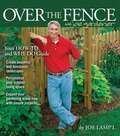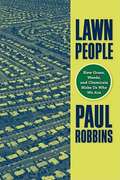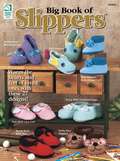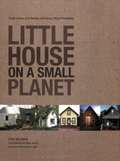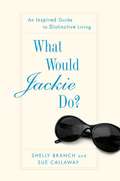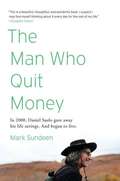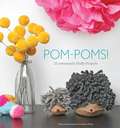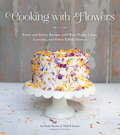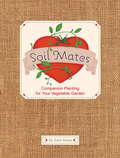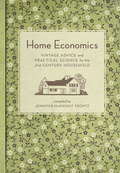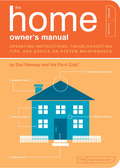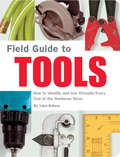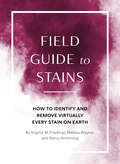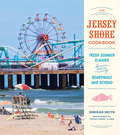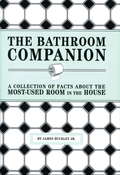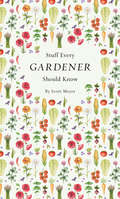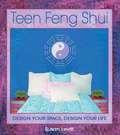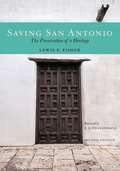- Table View
- List View
Housing Decisions
by Evelyn L. Lewis Carolyn S. TurnerGives students the guidelines they will need to make wise housing choices.
Housing Decisions
by Evelyn L. Lewis Carolyn S. TurnerHousing Decisions is designed to encourage a broad understanding and appreciation of the housing and interior design fields. Topics will lead you through the many issues faced when selecting and personalizing a home. Various housing and design options are presented to help you recognize the wide variety of choices available for addressing different needs and life situations.
Building Life Skills
by Louise A. Liddell Yvonne S. GentzlerBuilding Life Skills gives the tools you need to manage your life and helps you develop skills throughout your life. It contains eight parts and each part helps you develop different skills to build a satisfying life now and in the future. They help exploring relationships, managing time, understanding children, improving health and nutrition, selecting and preparing a variety of foods, caring for clothes, caring for home, improving leadership skills and career possibilities.
Over the Fence with Joe Gardener
by Joe Lamp'LJoe Gardener's approach to beautiful landscape design and maintenance. With its simple step-by-step how-tos and easy-to-understand why-dos, Over the Fence with Joe Gardener is the common sense resource for any level of gardener. As if you're chatting over the fence with a neighbor, Joe Lamp'l passes along his gardening expertise, complete with highly useful, rarely shared guidance, such as how much work is involved and common mistakes to avoid. With the added benefit of hundreds of helpful, full-color photos, beginning gardeners and horticulturists alike will appreciate Joe's neighborly style that will grow your gardening skills, giving you the confidence to create the outdoor space you've always dreamed of.
Lawn People: How Grasses, Weeds, and Chemicals Make Us Who We Are
by Paul RobbinsFor some people, their lawn is a source of pride, and for others, caring for their lawn is a chore. Yet for an increasing number of people, turf care is a cause of ecological anxiety. In Lawn People, author Paul Robbins, asks, "How did the needs of the grass come to be my own?" In his goal to get a clearer picture of why people and grasses do what they do, Robbins interviews homeowners about their lawns, and uses national surveys, analysis from aerial photographs, and economic data to determine what people really feel about-and how they treat-their lawns. Lawn People places the lawn in its ecological, economic, and social context. Robbins considers the attention we pay our turfgrass-the chemicals we use to grow lawns, the hazards of turf care to our urban ecology, and its potential impact on water quality and household health. He also shows how the ecology of cities creates certain kinds of citizens, deftly contrasting man's control of the lawn with the lawn's control of man. Lawn People provides an intriguing examination of nature's influence on landscape management and on the ecosystem.
Big Book of Slippers
by Susan HankinsKeep them warm this winter with a variety of slippers to stitch. Choose from Hearts Delight, Bridal Slippers, Mother & Daughter Slippers, Super Simple Slippers, Easy Granny Slippers, Men's Classic and more. You'll find styles and sizes to fit everyone in the family!
Little House on a Small Planet: Simple Homes, Cozy Retreats, and Energy Efficient Possibilities
by Shay SalomonCarpenter and construction manager Salomon presents readers with ideas for saving money, protecting the environment, and improving their livelihood by smart living in small spaces. The author profiles dozens of people around the world whose methods of scaling-down vary as widely as their locations--from single mothers in cooperative housing to homeowners converting to multi-use bathroom/lofts, adding home business spaces, or building from scratch. Floor plans; b&w and color images; and practical advice on legal matters, energy efficiency, creativity, and the importance of common spaces supplement the stories.
What Would Jackie Do? An Inspired Guide to Distinctive Living
by Shelly Branch Sue CallawayFrom fashion to finance, a sophisticated and entertaining guide that shows readers how to attain the elegance and practical smarts that defined Jackie O. We can't help but want to be like her: Exuding unmatched poise and style, she continues to fascinate people of all ages. But how would Jackie have handled the twenty-first-century? What would she think about a society that celebrates out-sized egos, instant everything, and casual rules of conduct? How might she dress for the office, scan for a man, accessorize a home, and get away from it all when necessary? With intriguing research, commentary from today's experts, and fond reminiscences from those who knew and admired the first lady of perfection, journalists Shelly Branch and Sue Callaway now offer a sparkling answer to the question, What Would Jackie Do? Applying Jackie's philosophies to every aspect of contemporary life, including relationships, office politics, family matters, and entertaining, What Would Jackie Do?is a trove of advice, featuring: "Noblesse Oblige for Beginners" How Not to be an Interchangeable Woman -- Mastering the Effortless Rich look -- The art of attachment: lessons on sex, marriage, and men of consequence -- Career Whirl: Pearls for Getting Ahead -- Caftan in a Kelly bag: How to travel beautifully -- Behave! Anti-brat strategies for parents -- En Suite Home: Perfecting Your Domestic Pitch -- The next best thing to having Jackie O. as a personal adviser, What Would Jackie Do? reveals the practical wisdom behind an icon and gives all readers a piece of the Jackie mystique, be it of the heart, the mind, or the home.
Beeswax Alchemy: How To Make Your Own Soap, Candles, Balms, Creams, And Salves From The Hive
by Petra Ahnert<p>Modern beekeepers - take notice! Here we have the answer to one of the most common questions related to beekeeping: what do I do with all of this beeswax? <p>In fact, the possibilities are seemingly endless! Since beeswax has multiple holistic and decorative uses, projects can vary from beeswax balms and beeswax creams, to household items like the classic beeswax candle. Beeswax Alchemy is your first step towards using excess beeswax to make beautiful, wellness boosting gifts for friends, family, and even yourself. <p>Not a beekeeper? Don’t worry, this guide works just as well with store bought beeswax! <p>The DIY beeswax projects are almost never ending, so grab some beeswax and get fired up!</p>
Pets Gone Green
by Eve AdamsonIn Pets Gone Green, New York Times best-selling author Eve Adamson explores how pet owners can have a positive effect on the environment and their pets' place within it. This engaging and enlightening book outlines strategies that pet owners can pursue to reduce the family's carbon foot- and pawprints, from using less toxic flea repellant to offering earth-friendly treats and toys to our much-loved pets. Adamson's goal in writing Pets Gone Green stemmed from her desire to find ways to save her dogs from the increasingly toxic environment around us. "...we are obligated to speak up for our furry companions, who are unable to think or act green on their own." Pets Gone Green remains a timely exploration of many of the hot-button topics in our world today, from eating local and animal rescue to activism and recycling! The book offers practical advice for owners of all pets, from dogs and cats to birds, small mammals, and more.As pet rescue has increasingly become "the thing to do," the book begins with a chapter on "Recycled Companions: The Ultimate Earth-Friendly Act," in which the author discusses the many advantages of rescuing a pet from a shelter or rescue society. Pet food, another hot topic in the pet world, is the subject of "Green Food," which includes a brief history of commercial food and the pluses and minuses of using natural, homemade, raw, and vegetarian diets for pets. The chapter "Altered States" is devoted to the importance and health benefits of spaying and neutering pets. Buying and eating local, diminishing consumerism, organic materials, holistic pet care, and recycling are all discussed in terms of improving humans' and pets' lives and reducing waste on a community, national, and global level.Printed with soy ink on recycled paper, Pets Gone Green presents the original artwork of New England painter and woodblock printmaker Willy Reddick. The book includes over 50 woodblock images of her beautiful peaceful animals, lending a down-home organic feel that is truly unique for a pet book.The ultimate message of the book is summarized in the final chapter "Animal Wisdom," in which Adamson focuses in on what our pets can teach us about the world around us through their natural instincts, simplicity, and view of the world. She concludes, "...animals are companions worthy of our respect, love, and care, and because they are so close to nature in ways we can only begin to comprehend, they are also the key to our salvation....Animals understand how to live lightly on the earth, and we can learn from them." Resources of animal welfare websites and agencies, green organizations, holistic resources, green product manufacturers, and green websites and publications included. Fully indexed.
The Man Who Quit Money
by Mark SundeenA Walden for the 21st century, the true story of a man who has radically reinvented "the good life" In 2000, Daniel Suelo left his life savings; all thirty dollars of it; in a phone booth. He has been living without money; and with a newfound sense of freedom and security; ever since. The Man Who Quit Money is an account of how one man learned to live, sanely and happily, without earning, receiving, or spending a single cent. Suelo doesn't pay taxes, or accept food stamps or welfare. He lives in caves in the Utah canyonlands, forages wild foods and gourmet discards. He no longer even carries an I. D. Yet he manages to amply fulfill not only the basic human needs-for shelter, food, and warmth-but, to an enviable degree, the universal desires for companionship, purpose, and spiritual engagement. In retracing the surprising path and guiding philosophy that led Suelo into this way of life, Sundeen raises provocative and riveting questions about our relationships with money and the decisions we all make, by default or by design; about how we live and how we might live better.
Quirk Books D.I.Y. Gift Guide: Curated by Quirk D.I.Y.
by Homemade QuirkHomemade Quirk is a cozy little community for do-it-yourself adventurers to share stories and ideas and meet new friends. We offer crafting advice for repurposing old books. We put booze in our ice-cream cakes. We promulgate our love of bacon. We give away cool stuff and much, much more.This holiday season we invite you to D.I.Y. your way through your gift- giving list. Here we've rounded up some of the best crafts and baked goods that Quirk Books has to offer. So if you have special people on your list who appreciate cute and quirky items and edibles, use this guide to create one-of-a-kind presents that will show them just how well you know them and just how much you care.If you want to share your creations or are just looking for more original D.I.Y. projects, join us and our fun friends at Homemade Quirk online.
Pom-Poms!: 25 Awesomely Fluffy Projects
by Sarah Goldschadt Lexi Walters WrightWhether they're perking up your clothes, brightening your home decor, or bringing a rainbow of color to your next party, pom-poms are perfect wherever they pop up. Each project in this book has oh-so-simple instructions and photographs that'll have you whipping up homemade tufts in all kinds of eye-catching patterns, from speckles to stripes to polka-dots. And don't worry about running out of yarn. You'll learn how to put a new spin on poms with a host of fun materials like tissue paper, tinsel, coffee filters, and cupcake wrappers. With 25 fresh and fancy takes on a classic, Pom-Poms! will give crafters of all ages a reason to cheer.
Cooking with Flowers
by Miche Bacher Miana JunHere are more than 100 recipes that will bring beautiful flower-filled dishes to your kitchen table! This easy-to-use cookbook is brimming with scrumptious botanical treats, from sweet violet cupcakes, pansy petal pancakes, daylily cheesecake, and rosemary flower margaritas to savory sunflower chickpea salad, chive blossom vinaigrette, herb flower pesto, and mango orchid sticky rice. Alongside every recipe are tips and tricks for finding, cleaning, and preparing edible blossoms. You'll also learn how to infuse vinegars, vodkas, sugars, frostings, jellies and jams, ice creams, and more with the color and flavor of your favorite flowers. Fresh from the farmers' market or plucked from your very own garden, a world of delectable flowers awaits!From the Hardcover edition.
Soil Mates
by Kelle Carter Sara AlwayMatchmaking in the garden! In this charming guide to companion planting for your vegetable-garden favorites, you'll learn why Broccoli Rosemary and whether Cucumber + Corn = friends with benefits. (Just watch out for Celery! Leggy and leafy, she is notoriously easygoing and will happily settle down with just about anyone, raising a ruckus in your raised beds.) Complete with 20 pairings, tasty recipes, prep-aration tips, and more, Soil Mates is the perfect partner for your horticultural matchmaker.
Home Economics
by Jennifer Mcknight Trontz"Housekeeping is becoming more and more a matter of science, and the laurels are bound to fall to the woman who conducts her household in a business-like way." Let the thrifty sensibility of yesteryear be your guide as you shop for the most economical foods, choose wall colors scientifically, clean with natural products, look your best without breaking the bank, and budget your way to frugal efficiency. In this amazing collection of clever wisdom and practical advice drawn from vintage home-economics textbooks, you'll find everything you need to get back to basics and run a healthy and happy household. Home Economics covers all the categories of delightful domesticity: * Health & Hygiene * Cookery & Recipes * Manners & Etiquette * Design & Decoration * Cleaning & Safety * Gardening & Crafts Rediscover the art and science of keeping house--economically!
The Home Owner's Manual
by Dan Ramsey Paul Kepple Jude Buffum The Fix-It ClubAt Last! A Beginner's Guide to Home Technology Water stains on your ceiling. Dents and cracks in your drywall. Radiators that hiss and gurgle all night long. It's enough to make you cry out, "Why doesn't my house come with an owner's manual?" And now--finally!--it does. Through step-by-step instructions and helpful schematic diagrams, The Home Owner's Manual explores hundreds of frequently asked questions: What's the best way to fix a leaky faucet? When should I have my chimney cleaned? How can I reset a circuit breaker without electrocuting myself? Whatever your concerns, you'll find the answers here--courtesy of licensed building contractor Dan Ramsey, who has taught the basics of renovation to thousands of homeowners.
Field Guide to Tools
by John KelseyFinally, a field guide to identifying and utilizing more than 100 tools, from an awl to a propane torch, from a table saw to a screwdriver! Field Guide to Tools is the ultimate guide to all the gear any handyperson requires. Hardware stores, home stores, and garden stores are full of unrecognizable items--here's how you can find out what tool is appropriate for your job and just how to go about employing it. Descriptive pages outline the basic history and use for each tool, inventive alternate functions, and operating principles; component parts are illustrated by helpful diagrams; and more than 100 full-color photographs aid in identification while at the hardware store. Step-by-step directions walk you through the basics of using each tool properly and safely. Don't attempt another at-home fix-it project without Field Guide to Tools!
Field Guide to Stains: How to Identify and Remove Virtually Every Stain on Earth (Field Guide)
by Nancy Armstrong Melissa Wagner Virginia M. FriedmanAt last, a field guide to identifying and doing battle with more than 100 stains, from tomato juice to tar, from avocado to urine! Field Guide to Stains is divided into handy sections for easy access to information when time is of the essence: Fruits and Vegetables, Meat and Protein, Household Items, Garage and Yard, and more. Readers will learn more than just removal techniques--details include general descriptions and likely seasons, times, and areas of occurrence. Did you know that a yogurt stain is more likely to occur in January (when New Year's resolutions demand more healthy eating), and that correction fluid stains are more prevalent in April (when the pressure to complete your taxes on time is at a high)? Includes more than 100 full-color photographs of stains, each one cross-referenced to its description and step-by-step removal advice. Quick-reference icons guide the reader to the most essential information in each entry. This guide has a sturdy, stain-proof exterior--making it a necessity for every cubicle, glove compartment, and college dorm. Field Guide to Stains is a must-have for everyone about to venture out into the wild, to the kitchen, or to a night on the town!
The Jersey Shore Cookbook: Fresh Summer Flavors from the Boardwalk and Beyond
by Deborah Smith Photography by Thomas Robert ClarkeCoastal cuisine from Asbury Park to Cape May. The warm sand. The salt air. The boardwalk. The food! Summer at the Jersey Shore is unforgettable no matter which seaside destination is yours. And with The Jersey Shore Cookbook, you can have a taste of summer all year long. It features 50 recipes contributed by well-loved shore town restaurants, bakeries, markets, and more. From fresh oysters, scallops, and tilefish to Garden State tomatoes, corn, and blueberries, the perfect New Jersey ingredients shine. Featuring favorites from: Asbury Park Atlantic City Avalon Bay Head Beach Haven Belmar Bradley Beach Brielle Cape May Cape May Point Harvey Cedars Highlands Keyport Lavallette Leeds Point Long Branch Manasquan Monmouth Beach Normandy Beach Ocean City Point Pleasant Beach Sea Bright Sea Girt Sea Isle City Ship Bottom South Seaside Park Stone Harbor Wildwood Wildwood Crest Selected Recipes: BREAKFASTS The Brunchwich: Pork Roll The Committed Pig, Manasquan Grilled Jersey Peaches with Greek Yogurt and Granola Lasolas Market, Normandy Beach STARTERS AND SIDES Allagash Steamers Marie Nicole's, Wildwood Crest Oysters Gratineé Fratello's Restaurant, Sea Girt SOUPS AND SALADS Roasted Tomato and Basil Soup Langosta Lounge, Asbury Park Beach Plum Farm Salad The Ebbitt Room, Cape May MAIN COURSES Golden Tilefish Sandwich Joe's Fish Co., Wildwood Lobster Thermidor Knife and Fork Inn, Atlantic City Spaghetti and Crabs Joe Leone's Italian Specialties, Point Pleasant Beach DESSERTS Blueberry Cobbler Talula's, Asbury Park Key Lime Pie Inlet Café, Highlands
The Bathroom Companion
by James BuckleyIt's the most used room in the house--but how much do you know about it? Here's the first book about the bathroom written exclusively for the bathroom! Set it on the back of the tank and learn something new on every visit--amazing facts and figures from history, science, pop-culture, and more. Don't let you time in the bathroom be a waste!
Stuff Every Gardener Should Know
by Scott MeyerThe latest in the best-selling Stuff series, Stuff Every Gardener Should Know is the perfect pocket guide to your garden! What’s the difference between heirlooms and hybrids? How can I stop weeds from invading my flowerbeds? And what’s the best way to attract helpful, beneficial insects? All these questions and more are answered in Stuff Every Gardener Should Know—a handy little reference book that’s perfect for gardeners of all ages and experience. From the secrets of indoor seed-starting to tips for hassle free roses, this delightful companion is blooming with fun facts and helpful ideas.From the Hardcover edition.
Teen Feng Shui: Design Your Space, Design Your Life
by Susan LevittA feng shui book specifically for teens.• Shows how to create balanced teen environments that promote personal development and positive self expression.• Tailors solutions to teen spaces: bedrooms, dormitories, desks, drawers, and lockers.• Shows how, when, and where to use music, incense, and posters.• Addresses real teen issues such as body image, tattoos and piercings, and cigarettes and other drugs.Teen Feng Shui demonstrates how the universal principles behind the design practice of feng shui can be applied to the contemporary environments of teenagers--from school lockers to dorm rooms--in order to maximize personal power, develop harmonious relationships, and define personal space. Noting that all books on feng shui are created for adults, Susan Levitt has provided a resource geared specifically toward the needs and realities of the teenage experience, addressing how young adults can design their living spaces to transform their lives. She describes how music, posters, and incense can influence space and includes before-and-after illustrations of feng shui "fixes." Teen Feng Shui also incorporates Chinese astrology, financial management and shopping tips for teens, insights on love and sex, personal stories, and case studies to provide a fun and comprehensive guide to this ancient art of placement.
Saving San Antonio: The Preservation of a Heritage
by Lewis F. FisherFew American cities enjoy the likes of San Antonio's visual links with its dramatic past. The Alamo and four other Spanish missions, recently marked as a UNESCO World Heritage site, are the most obvious but there are a host of landmarks and folkways that have survived over the course of nearly three centuries that still lend San Antonio an "odd and antiquated foreignness." Adding to the charm of the nation's seventh largest city is the San Antonio River, saved to become a winding linear park through the heart of downtown and beyond and a world model for sensitive urban development. San Antonio's heritage has not been preserved by accident. The wrecking balls and headlong development that accompanied progress in nineteenth-century San Antonio roused an indigenous historic preservation movement-the first west of the Mississippi River to become effective.Its thrust has increased since the mid-1920s with the pioneering work of the San Antonio Conservation Society. In Saving San Antonio, Texas historian Lewis Fisher peels back the myths surrounding more than a century of preservation triumphs and failures to reveal a lively mosaic that portrays the saving of San Antonio's cultural and architectural soul. The process, entertaining in the telling, has reverberated throughout the United States and provided significant lessons for the built environments and economies of cities everywhere.
Juan O'Gorman: A Confluence of Civilizations
by Catherine Nixon CookeTo create the "Confluence of Civilizations" mural commissioned for the 1968 World's Fair in San Antonio, Texas, Juan O'Gorman collected natural stones from all over Mexico-twelve colors in all-field stones that the artist knew would never fade or change their hue. Juan O'Gorman: A Confluence of Civilizations follows the life of Juan O'Gorman and covers the creation of this spectacular piece of midcentury public art that stands the test of time not just in vibrancy but as one of the most influential works created by a storied Mexican artist.Juan O'Gorman was a not only a painter and a muralist, a mosaic artist, a critic, and a professor, but he was also an architect and a revolutionary; possibly most famous for his close friendship with Diego Rivera and Frida Kahlo and as designer of their infamous two-house studio in Mexico City-Casa Azul-linked by a symbolic bridge.To celebrate San Antonio's "HemisFair" Exposition in 1968, Juan created the giant mosaic mural that still adorns one wall of the Lila Cockrell Theater along San Antonio's famed River Walk. The design plans for the five ton mosaic measured 2600 square feet and consisted of 540 numbered panels, each weighting about 90 pounds.


